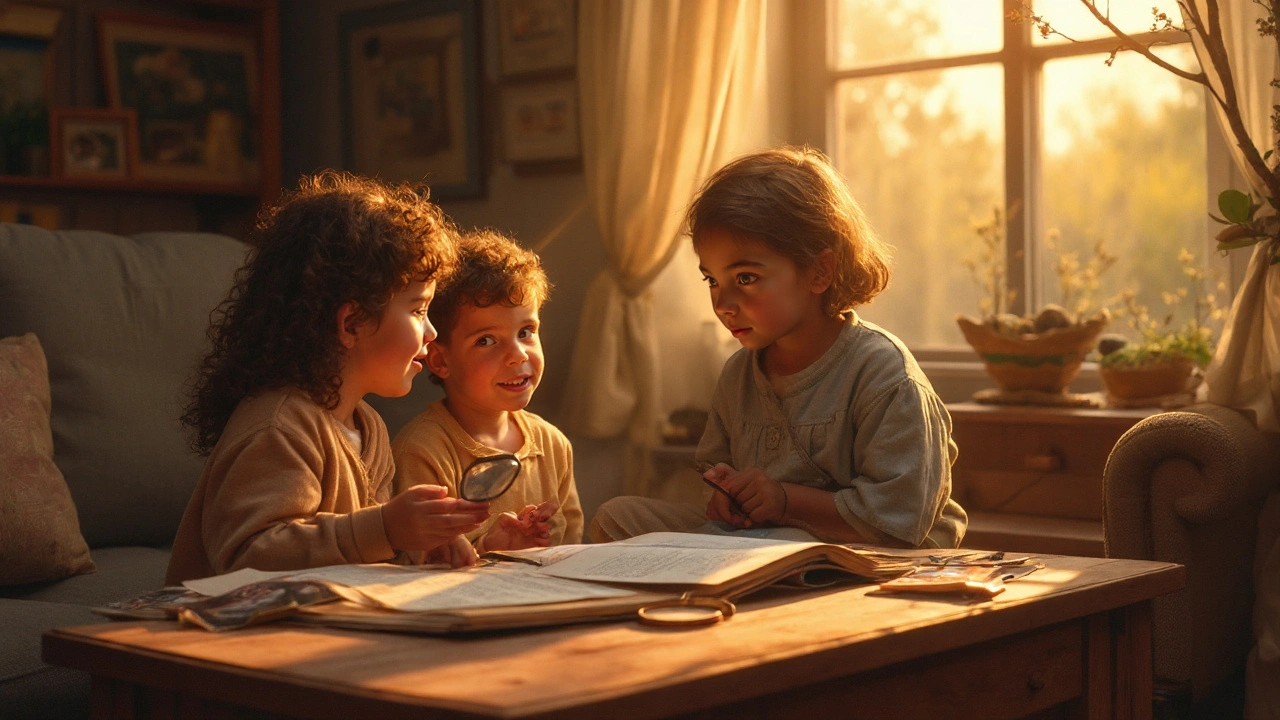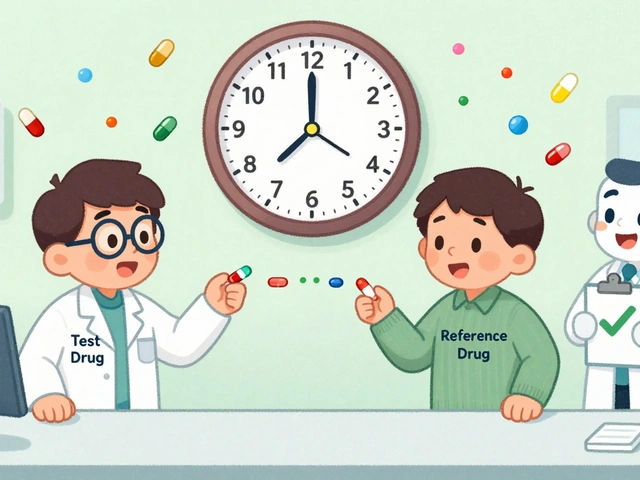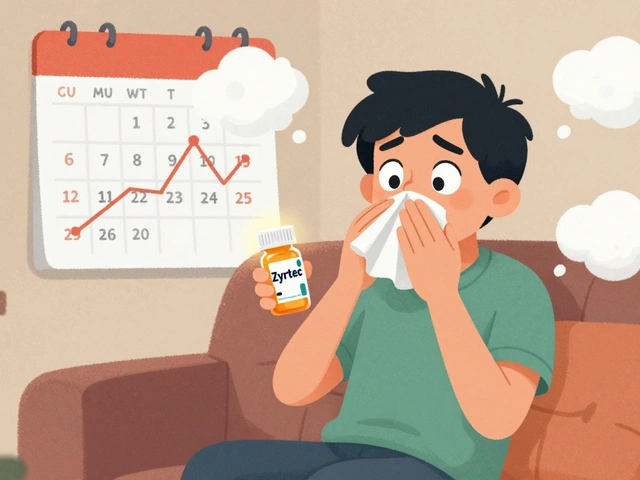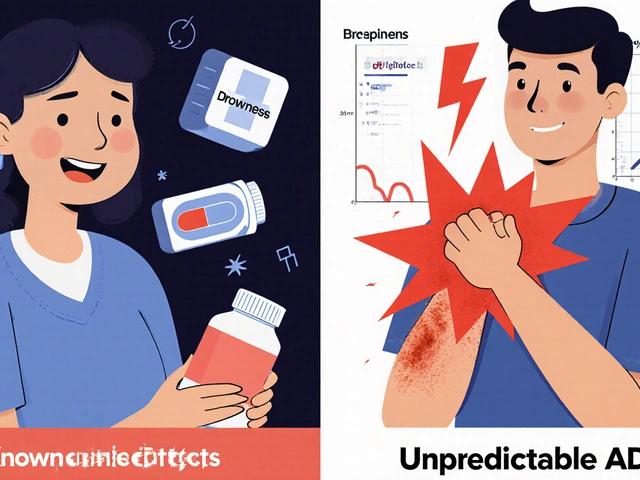Your face keeps a quiet record of your past. Freckles, eye color, the way you tan-these aren’t random. They’re the visible outcomes of genes your ancestors carried through climate, migration, and chance. If you’re hoping for a quick yes-or-no answer about heritage, that’s not how biology works. But you can read honest clues-patterns-without falling for myths.
Here’s what you’ll really learn: what freckles and eye color are at the gene level, how often they travel together, what combinations hint at certain regions, and when lifestyle and sunlight muddy the picture. I live in Auckland, where the UV is no joke and mixed heritage is common, so I’ll call out where the environment can trick you.
TL;DR
- Freckles and eye color both come from how your body handles melanin. The same broad pigment pathways are involved, but different genes drive each trait.
- Freckles are strongly tied to MC1R variants common in Northwestern Europe; lighter eyes often come from HERC2/OCA2 variants. They overlap in those populations but don’t depend on each other.
- Combinations can hint at ancestry: light eyes plus heavy freckling points toward Northern/Western Europe; brown eyes with light freckling is common in mixed backgrounds.
- Sun exposure, age, and hormones change freckling. Features are clues, not proof. For confirmation, use records or DNA testing.
- Use a simple checklist and decision tree below to weigh what your features actually say-and what they don’t.
Jobs you probably want to get done
- Understand how freckles and eye color work genetically.
- See if those traits suggest particular ancestral regions.
- Tell genes from environment (UV, aging, hormones).
- Use practical rules of thumb without stereotyping yourself.
- Know what to do next if you want firmer answers.
How freckles and eye color really work (and why they sometimes travel together)
Both freckles and eye color come down to melanin-the pigment that protects your DNA from UV. You’ve got two main types: eumelanin (brown-black, strong UV shield) and pheomelanin (red-yellow, weaker shield). Genes decide how much you make, where you put it, and when it turns on.
Freckles 101. The classic small, flat, tan-to-brown spots that darken with sun and fade in winter are ephelides. They’re not moles and not sun spots from aging. Ephelides reflect a gene signal that says “make more pigment” in certain spots when UV hits. MC1R is the headline gene here. Variants in MC1R shift the balance from eumelanin toward pheomelanin and increase sun sensitivity and freckling. Multiple variants exist, and each one tweaks risk differently. In European cohorts, carrying common MC1R variants raises the odds of freckling several-fold compared with people who carry the reference version. Research across large datasets, including UK Biobank and Irish cohorts, shows these variants are frequent in Northwestern Europe. But freckles show up in many groups; it’s the frequency that changes.
Eyes 101. Eye color is about pigment in the iris and how the iris scatters light. A regulatory switch in HERC2 controls the OCA2 gene, which influences melanin production in the iris. A well-studied variant in HERC2 lowers OCA2 activity in the iris and is strongly associated with blue eyes in Europeans. Green and hazel eyes tend to sit in the middle-some melanin plus optical scattering-and involve more genes (SLC24A4, SLC45A2, TYR, IRF4, and others). Large studies in European populations (for example, Sturm et al., American Journal of Human Genetics 2008; Hysi et al., 2016) show eye color is polygenic with a strong HERC2/OCA2 anchor.
So, what’s the link? Both traits trace to melanin pathways, but with different gatekeepers. Where freckles lean heavily on MC1R and UV response, eye color leans on HERC2/OCA2 and a supporting cast. Populations that migrated into low-UV environments (Northern Europe) saw a higher frequency of variants for lighter eyes and increased freckling. That’s why you often see them together in those regions. But there’s no rule that you must have both: plenty of blue-eyed people don’t freckle much, and plenty of freckled folks have brown eyes.
Quick reality checks:
- Freckles are dynamic. They flare in summer, fade in winter, and often show most in childhood when skin is thin and UV exposure stacks up.
- Ephelides are different from solar lentigines (age spots). Age spots appear later in life, stick around year-round, and trace long-term UV exposure rather than a strong genetic switch.
- Skin tone doesn’t block freckles. People with tan or olive skin can freckle; the contrast is just lower, so they’re less obvious.
The genes you’ll see most often in pigmentation research:
- MC1R: freckles, red hair, sun sensitivity. Variants common in Northwestern Europe.
- HERC2/OCA2: major lever for blue vs brown eyes; also touches skin/hair pigmentation.
- SLC24A4, SLC45A2, TYR: melanin production and transport; influence eye, hair, and skin.
- ASIP, IRF4: regulatory roles; IRF4 variants link to freckling and lighter eyes in Europeans (Praetorius et al., Nature 2013).
What big datasets say. Analyses from UK Biobank and other European biobanks find that freckling correlates with red hair and poor tanning, and lighter eyes cluster with the HERC2/OCA2 variant. The overlap is strongest in Ireland, Scotland, and parts of Scandinavia, weaker in Southern Europe, and far weaker in East Asia, South Asia, and the Pacific. Newer polygenic studies (Nature Genetics and Nature Communications, 2019-2022) map hundreds of variants that nudge pigmentation, so single-gene stories only explain part of what you see in the mirror.
Bottom line on the biology: if you’re looking for ancestry clues, look at trait combinations, not single traits. And remember that latitude, UV, and culture (think: sunscreen, hat habits) can leave marks that look genetic when they aren’t.
Feature-and-region cheat sheet (broad trends, not rules):
| Trait combo | More common in | Notes |
|---|---|---|
| Many ephelides + light eyes (blue/gray/green) | Northwestern Europe | High MC1R variant load, HERC2/OCA2 blue-eye variant frequent. |
| Light eyes + few/faint freckles | Northern/Western Europe broadly | Freckling varies with UV and childhood sun. |
| Brown/hazel eyes + visible freckling | Mixed European backgrounds; diaspora populations | Common where Northern and Southern European ancestry blend (e.g., the Americas, Australia, New Zealand). |
| Brown eyes + minimal freckling | Mediterranean, West Asia, South Asia, East Asia, Pacific | Freckling can appear with heavy UV, but frequency is lower genetically. |
| Very dark eyes + freckles | Mixed heritage or strong UV exposure | Possible in many groups; look for family history to interpret. |
One term you’ll see a lot is freckles and eye color. It’s handy, but keep reminding yourself the two traits are cousins at best, not twins.

What your features hint about ancestry (with simple rules, examples, and a decision tree)
If you want practical, here it is. Use these rules of thumb as weighted clues, not verdicts.
Rules of thumb
- Light eyes are heavily enriched in European ancestry, especially Northern and Western. Outside Europe, light eyes usually signal recent European input.
- Freckles are common in people with European ancestry, peaking in Irish and Scottish lineages, but can appear in many populations with enough sun.
- Green and hazel eyes are polygenic and often show up in people with mixed European regional ancestry (e.g., Celtic plus Germanic).
- High-UV living exaggerates freckling regardless of heritage. That’s why kids in New Zealand or Australia may freckle more than cousins in northern Europe who stayed indoors.
Simple decision tree (start at the top)
- Do you have light eyes (blue/gray/green)?
- Yes: Recent European ancestry is likely. Go to step 2.
- No: Brown/hazel eyes are common worldwide. Look to freckles and skin response to sun for additional clues.
- Do you have many ephelides that darken in summer and fade in winter?
- Yes: Strong hint toward Northwestern European ancestry, especially if you also burn easily.
- No: Light eyes without heavy freckling are still common in Northern/Western Europe.
- How does your skin behave in sun?
- Burns easily, seldom tans: Higher likelihood of Northern European ancestry.
- Tans gradually after an initial burn: Common in Central/Western/Southern Europe and mixed backgrounds.
- Tans readily: Common in Mediterranean, West Asian, South Asian, East Asian, and Pacific ancestries.
- Any family history of red hair, very fair skin, or many childhood freckles?
- Yes: Points toward MC1R variants and Northern European lines.
- No: Neutral; move on.
- Were your freckles mostly a childhood thing that faded with age?
- Yes: Classic ephelides pattern; genetics plus childhood UV.
- No: If spots persist year-round into adulthood, consider age spots and sun history rather than ancestry.
Examples you’ll actually recognize
- Blue eyes, lots of childhood freckles, burns in spring: The pattern you see again and again in Irish and Scottish ancestry, also common in Scandinavia.
- Green eyes, light freckling, brown hair, can tan: Typical mix across the British Isles and continental Western Europe (Netherlands, Germany, France).
- Brown eyes, noticeable freckles on nose and shoulders after summer: Very common in mixed backgrounds in New Zealand, Australia, the US, and Canada.
- Dark brown eyes, faint freckles only on cheeks after intense sun: Seen in many groups under strong UV. Genetics here are less specific.
New Zealand and Pacific context
In Aotearoa New Zealand, you’ll see a lot of combinations because many families blend Māori, Pacific, and European ancestry. Brown eyes are the norm globally and among Māori and Pacific peoples, and freckling is typically less common genetically. But the UV here is harsh. Kids of all backgrounds freckle more than you’d expect just from genes. If you’ve got brown eyes and freckles in Auckland or Christchurch, that may say as much about summer cricket under the midday sun as it does about your genome. If your whānau stories mention Irish or Scottish great-grandparents, and you or your siblings have light eyes or burn easily, that lines up with the genetic picture.
What’s not a clue (or a weak one)
- Winter freckles only: Many fade; absence in winter doesn’t erase the genetic signal.
- Makeup-free selfies under warm lights: Yellow lighting can fake a tan and hide freckles. Use natural, indirect daylight when you assess.
- One unusual spot: That’s not a freckle pattern. See a clinician if a spot changes shape, color, or border.
A quick how-to: reading your features without fooling yourself
- Photograph in natural light. Stand by a window at midday. No filters.
- Map freckles. Note where they show up first (nose, cheeks, shoulders) and whether they darken with sun and fade in winter.
- Call your eye color honestly. Blue/gray/green/hazel/brown. Hazel has a mix; green isn’t just light brown.
- Add two context clues: hair as a kid (natural shade) and how easily you burn or tan in the first two weeks of summer.
- Write down family locations two generations back if you can. Even town names help (Donegal differs from Sicily in UV history and allele frequencies).
- Compare what you wrote to the rules of thumb above. If you tick multiple boxes in one region, that pattern has weight.
Quick checklist
- Freckles darken in summer, fade in winter
- Light eyes or hazel
- Burns easily
- Family history of red/blond hair or many freckles as kids
- Northern/Western European grandparents or surnames
If you tick three or more, Northern/Western European ancestry is likely part of your story.
Myth busting
- Freckles mean you’re Irish. They’re common in Ireland, yes, but also across Scotland, England, Scandinavia, and the diaspora.
- Brown eyes mean non-European ancestry. Not true. Most of the world has brown eyes. Plenty of Europeans have brown eyes, especially Southern and Eastern Europe.
- Green eyes are a single gene. They aren’t. Many genes contribute small effects.
- No freckles means no European ancestry. Not at all. Plenty of Europeans don’t freckle much.

FAQ, next steps, and how to get reliable answers
Mini‑FAQ
- Are freckles genetic or environmental? Both. Genetics sets your sensitivity; UV exposure triggers freckles. MC1R variants are the big players in European populations.
- Can brown-eyed people have strong Northwestern European ancestry? Absolutely. Eye color is polygenic. Brown can show up anywhere, including Northern Europe.
- What’s the difference between freckles and age spots? Freckles (ephelides) come and go with seasons; age spots (solar lentigines) appear later and persist. A dermatologist can tell them apart quickly.
- Do freckles raise skin cancer risk? Freckles track with sun sensitivity, which tracks with higher UV damage risk. That’s a behavior signal more than a freckle-causes-cancer story. Use hats, UPF clothing, shade, and sunscreen.
- Why do kids freckle more? Thinner skin, more time outdoors, and gene expression patterns in childhood. Many fade in adulthood.
- Are green eyes different from hazel? Green is cooler-toned with less brown pigment; hazel is a blend of brown with green or gold. Both are polygenic.
- Can two brown-eyed parents have a blue-eyed child? Yes, though it’s uncommon. Multiple genes interact, and recessive combinations can produce light eyes.
- I live at high UV latitudes (like New Zealand). Will that inflate my freckles? Yes. UV here is strong. That can amplify freckling in anyone who’s genetically primed.
What to do next if you want clarity
- Gather family clues. Ask relatives for places of birth for parents and grandparents. Photos from childhood can reveal early freckling and natural hair color.
- Use records. Birth records, immigration files, and local archives can confirm locations and surnames tied to specific regions.
- Consider a DNA test if you’re comfortable with the privacy trade-offs. Autosomal tests estimate regional ancestry and can confirm likely European components suggested by light eyes and freckling. Remember: estimates, not citizenship documents.
- Cross-check siblings. Polygenic traits shuffle. Your sister’s green eyes and your brown eyes say nothing contradictory about shared ancestry.
- Be climate-aware. If you grew up in New Zealand or Australia, expect more freckling than your cousins in northern Europe, even with the same genes.
Troubleshooting by scenario
- Adopted, no records: Start with DNA testing matched against reference panels. Seek geographic clustering in matches (for example, lots of relatives from Ulster vs. Tuscany). Your features can prime expectations, but don’t lean on them alone.
- Mixed heritage, conflicting signals: Weight your clues. Light eyes carry stronger regional weight than mild freckling. Add hair color as a child and burn/tan pattern to balance the picture.
- Brown eyes, many freckles: Could reflect European ancestry plus strong UV exposure. Check childhood photos and parental features. In diaspora countries, this combo is common.
- Dark skin, light freckling: Very possible under intense sun. The freckling doesn’t override your broader ancestry signal; treat it as a small weight.
- One child freckles, the other doesn’t: Polygenic shuffle. Both can share the same ancestry; expression varies.
- Concern about a changing spot: That’s a health question, not an ancestry clue. Get a professional skin check, especially if you burn easily.
Credible sources behind these claims
- MC1R and freckling/red hair: Multiple studies in European cohorts; see Journal of Investigative Dermatology and Human Molecular Genetics across the 2000s-2010s for variant-specific effects.
- Eye color genetics: Sturm et al., American Journal of Human Genetics (2008) on HERC2/OCA2; Hysi et al., 2016, on polygenic models of eye color in Europeans.
- IRF4 and freckling/light eyes: Praetorius et al., Nature (2013), mapping regulatory variants affecting pigmentation.
- Large-scale pigmentation GWAS: Nature Communications and Nature Genetics papers (2019-2022) leveraging UK Biobank and other cohorts for multi-gene models.
Ethical note
Traits are fun clues, but people aren’t puzzles to solve. Use this information to understand your story, not to box anyone in. The most interesting thing about your freckles might be that they came from a great-grandparent who crossed oceans-and that you inherited their love of the sun along with a reminder to wear a hat.
Quick recap you can save
- Freckles and eye color share pigment pathways but rely on different key genes.
- They overlap most in Northwestern Europeans, yet either can show up alone.
- UV, age, and hormones reshape what you see day to day.
- Use combinations and context, then confirm with records or DNA if you need proof.
If you’re reading this on a bright Auckland morning, take it as your cue: grab a photo in good light, jot down what you see, and treat your features as hints-useful, honest, and part of a bigger story you can keep uncovering.






Tariq Riaz
September 13, 2025 AT 22:14Freckles and eye color being tied to melanin pathways is solid, but I’ve seen South Indian kids with light freckles from monsoon sun exposure-no European ancestry in sight. Genetics sets the baseline, but UV dose is the real trigger. In Chennai, kids come back from summer camp looking like they’ve been sprinkled with cinnamon. It’s not heritage, it’s weather.
Roderick MacDonald
September 14, 2025 AT 08:01Look, I grew up in rural Nebraska with blue eyes and zero freckles, then moved to Arizona and spent three summers working construction. Now I look like a walking raisin with a few scattered dots on my nose. This whole post is technically correct, but it misses the point: your skin remembers the sun, not your great-grandma’s village. I’ve got a DNA test that says 98% Northwestern European, but I don’t look like I came from the Hebrides-I look like I came from a damn parking lot in Flagstaff. Stop romanticizing genes. The real story is how much we’ve moved, how much sun we’ve absorbed, and how little our bodies care about borders.
Chantel Totten
September 14, 2025 AT 21:46I appreciate how this breaks down the science without reducing people to their pigment. My mom has brown eyes and faint freckles from decades in Oregon, but her dad was from Sicily and her mom from Norway. I inherited the freckles and the green eyes, but my brother got the dark hair and no freckles at all. It’s wild how the same genes can play out so differently. I think the real takeaway is that our bodies are living maps of migration, not static labels. We’re all just light and shadow stitched together by time.
Guy Knudsen
September 16, 2025 AT 00:43Everyone’s acting like this is groundbreaking when it’s just undergrad genetics with a coffee shop vibe. MC1R? HERC2? You think I haven’t seen this in 2012? And the whole ‘use natural light’ thing? Like I’m supposed to drop my phone and go stand by a window like some Victorian naturalist. Also freckles aren’t a ‘clue’ they’re just a side effect of being pale and dumb enough to not wear sunscreen. And don’t even get me started on the ‘decision tree’-it’s a flowchart for people who think ancestry is a bingo card
Terrie Doty
September 17, 2025 AT 00:36I live in Portland and have hazel eyes and a few freckles that only show up after the first warm week of spring. My dad’s family is from Poland, my mom’s from Ghana-both sides have always said I look like the ‘accidental mix’. But I’ve never seen a single photo of my Ghanaian ancestors with freckles. And yet here I am, looking like I stepped out of a Scottish film. It makes me wonder if the genes are just waiting to be activated by environment, not inherited as a fixed trait. Maybe we’re not just carrying ancestry-we’re rewriting it every time we step outside. I didn’t know that until I started paying attention to my skin. It’s quiet, but it’s telling a story.